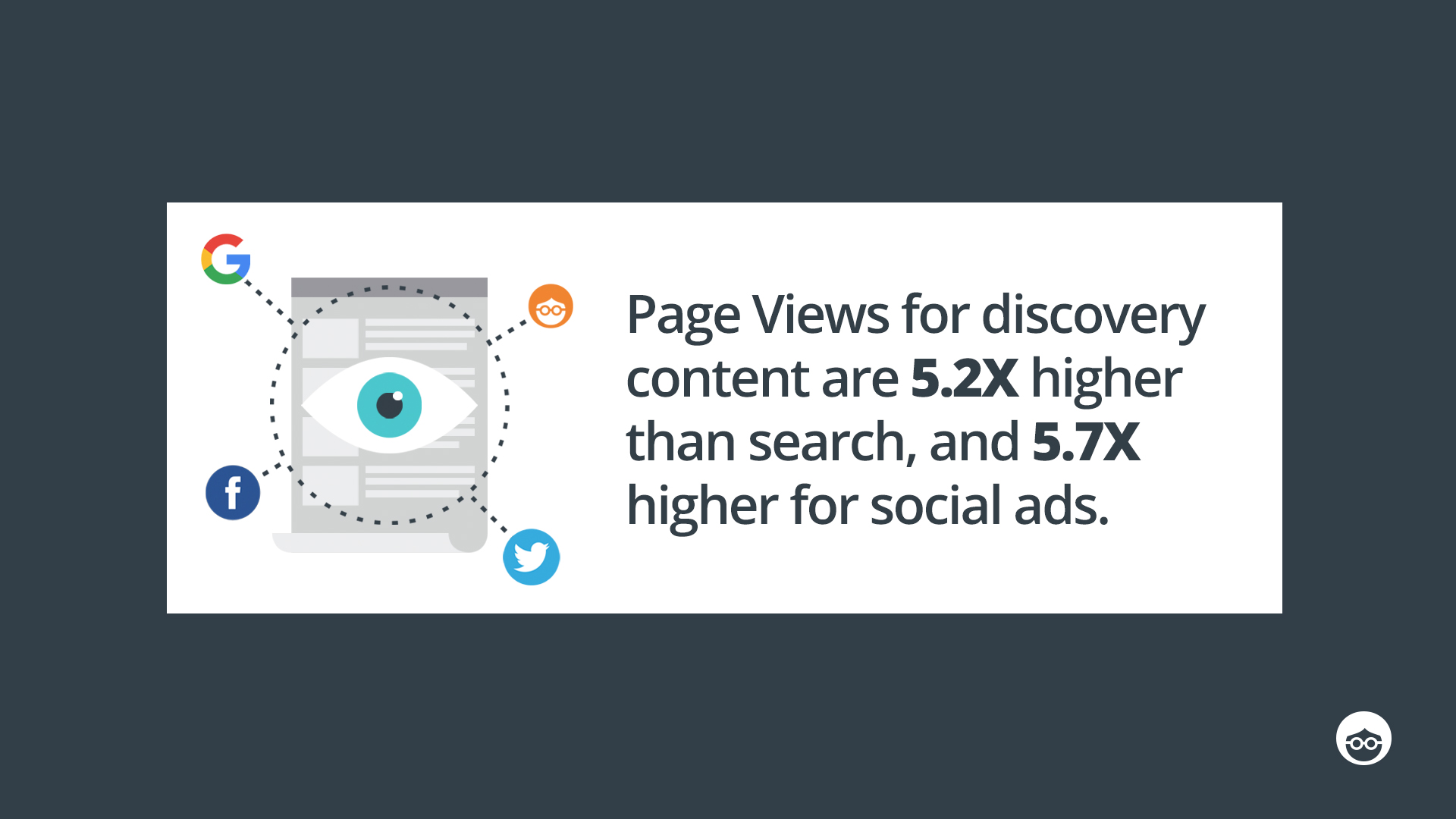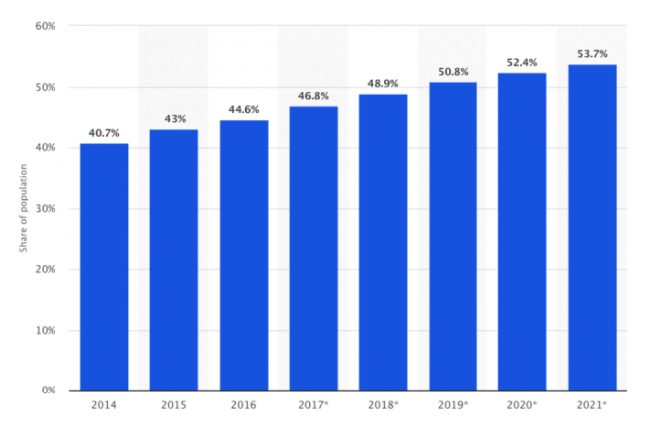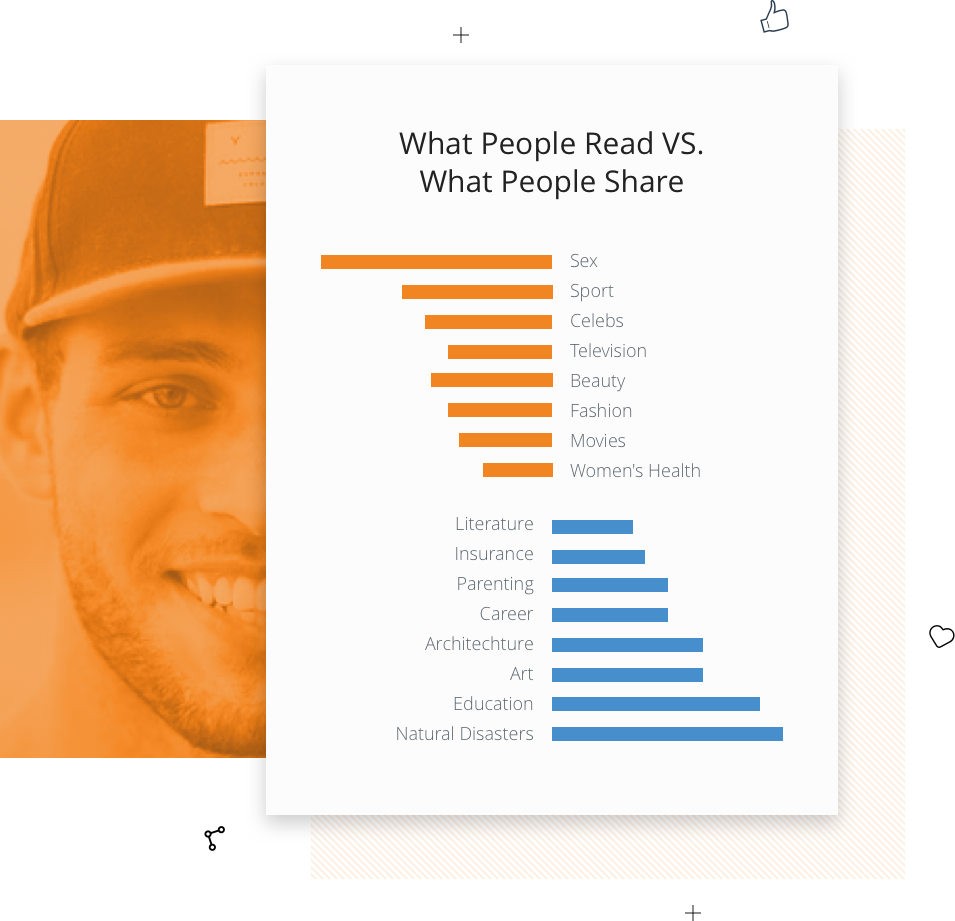
If you’re getting serious about using PPC advertising to promote your business, then you’re going to have to answer more than a few important questions. Which channels should you use? Which platform works best for your audience? What type of ad will bring more qualified leads? And how can you get the best ROI from your advertising spend?
As online advertising becomes more sophisticated, answering these questions seems to get harder. In 2017, Outbrain delivered 3.2 trillion content recommendations on the best publisher sites, resulting in 9 billion conversions. So we’ve got access to loads and loads of data, across a range of industries, to help you understand how people interact with online content, and how search, social and discovery ads really compare in terms of performance.
Let’s start with a brief tour of these three PPC ad types, and the different ways that your audience relates to them:
Search
Paid search ads are ads that appear at the top of search listings, or as sidebar ads on the search results page. In 2017, there were an estimated 1.2 trillion searches on Google alone. Search ads are viewed by an audience when they are actively searching for a product, service, or information. When a search ad is delivered, the viewer is already hyper-focused on the topic of the search. Let’s say a person is searching for “round plant holders”, and your search ad appears, stating “Discounted prices on quality plant holders”. The viewer is more likely to click on the ad, or – at the very least – to consider the ad to be relevant and useful.

Global Population Accessed the Internet (source: smartinsights.com)
Bottom line
Search ads are great for targeting customers when they are already looking for you (ie. they searched your company name or product), or if they are searching for a specific product, service, or piece of information that you can provide. For this reason, search ads tend to bring higher quality leads that are more likely to convert.
Social
Social media ads are ads that appear on social networks, as promoted or sponsored content in the user’s news feed or on the sidebar. They’re a powerful tool. It is estimated that 49% of 18-29-year-olds have purchased something they saw in a Facebook ad. Paid social ads are served via algorithms that define what the user might be interested in, based on past activity in their social accounts, such as likes, shares, and comments. Unlike search, which is a focused, goal-oriented activity, browsing on social is more relaxed. Think cat memes, vacation snaps, and fun quizzes. Nevertheless, the social platform has accumulated masses of data about every specific user, which can be leveraged to target specific audiences with ads that are likely to be of interest to them.
Bottom line
Social ads are best for targeting audience segments who may be interested in your product or service, based on a range of targeting criteria – location, age group, gender, hobbies, interests. Social networks, such as Facebook, have advanced targeting capabilities, which means you can fine-tune your targeting criteria to reach a very specific, high-quality audience.
Discovery
Discovery ads are native ads delivered by a content recommendation platform, such as Outbrain. The discovery platform serves an ad in the form of a link to an interesting, informative or amusing piece of content. When a person sees a discovery ad, they’re in what’s known as ‘discovery mode’. They’re browsing online, leaning back, taking it easy. They’re reading a site they love to visit, and perhaps visit often. The discovery ad provides valuable content and an engaging experience, while gently reminding the viewer of the brand. Good discovery ads invite readers to click through to get even more engaged.
Bottom line
Research at Outbrain has shown that there is a strong disparity between the content a person likes and shares on social media, and the content they really read. Performance marketers must find a way to appeal to the authentic interests of their audience. Outbrain’s Toolkit contains a range of ‘interest targeting’ solutions that give businesses deep insights into the authentic interests of the target audience, which can be leveraged to serve discovery ads they truly want to see.

Now, to the All-Important Numbers
Performance marketing is all about the numbers, and when it comes to search vs. social vs. discovery ads, what they have to say is compelling.
Page Views
Research has shown that Page Views for discovery content are 5.2X higher than search, and 5.7X higher for social ads.*
That means that a reader is over 5 times more likely to engage with a discovery ad than a search or social ad, and they’re visiting more pages per session as a result of their engagement with discovery ads.
Bounce Rate
Also, Bounce Rates for discovery ads are shown to be 39% lower than search ads, and 42% lower than social ads – which means that readers are significantly more likely to engage with content that they’ve reached via a discovery ad than a search or social ad.
The Numbers in Action – Auto Category
Here’s an example specific to a particular content category: In 2017, readers spent 1.5X longer reading content on Outbrain’s discovery network than on social, and 3.6X longer than on search campaigns. For auto enthusiasts, discovery content is the clear winner.
Discovery Ads – The Secret Ingredient
What could be the reason that discovery ads are so much more engaging than search or social?
Let’s return to the intent of the reader when they are viewing different ads. For search ads, the viewer is highly focused on the search. They’re looking for a specific product. They have a need to be filled. They’re probably not in the mood to wander around the web.
With social ads, the reader is casually browsing, checking out what’s going on in their network. They’re not necessarily looking for anything specific, or they may not know if they are looking for anything at all. What’s more, social ads served to the viewer are based on their past likes and shares, which may not necessarily reflect their true interests.
Discovery ads, on the other hand, are served at the ideal opportunity for reader engagement. The viewer is in discovery mode – they’re primed to discover great content that matches their interests. Also, interest targeting tools like Outbrain’s Toolkit are designed to serve ads that relate to the viewer’s authentic, and sometimes hidden, interests. The things they really want to read. Is it any wonder that discovery ads are so adept at attracting and maintaining the reader’s attention?
Lesson Learned
For performance marketers, the message is clear – incorporate a rich assortment of valuable and entertaining content in your online strategy, and deliver it via discovery platforms that feature advanced targeting tools.
*Source: Internal Outbrain data